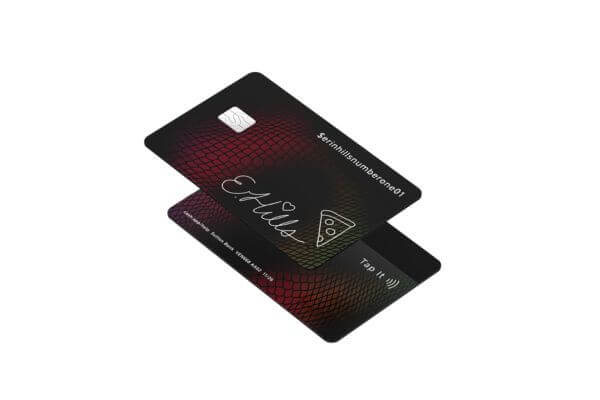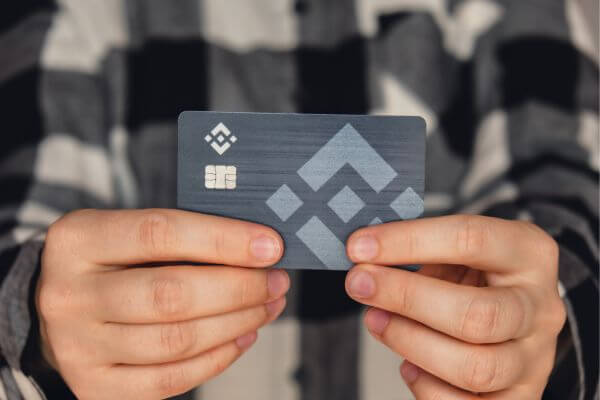How to Get the Cash App for Kids: A Complete Guide for Parents
Inside: Are you looking for a way to help your kids learn about money? If so, Cash App for kids is the ideal answer. This guide will teach you how to manage money simply by using apps.
Ever wondered why it’s crucial for your kids and teens to have a cashless payment option?
In this digital age, teaching money management skills early to our younger generation is vital.
Having features like Cash App for kids is a great way to introduce them to responsible spending. Not only does it provide a secure method for purchases without the need for carrying physical money, but it also serves as an excellent tool for setting spending limits and tracking budgeting habits.
Plus, it’s a win-win for parents and teens as you can visually monitor transactions while they enjoy a sense of financial independence.

This post may contain affiliate links, which helps us to continue providing relevant content and we receive a small commission at no cost to you. As an Amazon Associate, I earn from qualifying purchases. Please read the full disclosure here.
What is Cash App?
Cash App is a user-friendly financial services platform that allows users to instantly send, receive, and invest money.
It offers a range of services including a free custom Visa debit card and the option to receive paychecks up to two days earlier.
Additionally, with the Cash App, users can instantly buy and sell stocks commission-free and even trade in bitcoin.
Can a child have Cash App?

Yes, a child can have a Cash App account if they are 13 years old or older. However, it requires parental approval.
Remember, this gives your child the opportunity to learn money management, but it also comes with the responsibility of overseeing their spending.
Why would kids need Cash App?

Well, we are moving to a cashless world. There are thousands of stores and restaurants that only offer cash. We learned this when our son went to an MLB baseball game with his middle school. No cash. Only debit or credit cards were accepted as well as Visa gift cards.
So, we needed to give our kids an introduction to modern, simple, and secure ways of money management.
Cash App might be the perfect solution. Another great option is Greenlight for kids.
Cash App is a user-friendly financial services platform that allows users to instantly send, receive, and invest money.
Simple way to save on everyday spending and back the way you want.
What are the benefits of using Cash App for kids?
- Education: Cash App can be an effective way to teach your children about responsible money handling and the dynamics of a digital economy.
- Control: You have the flexibility to set spending limits and disable certain features, ensuring responsible use of the application.
- Security: Cash App’s encrypted connection adds an extra layer of security, keeping your kid’s transactions and personal data secure.
- Emergencies and convenience: It’s an incredibly handy tool for sending cash to your kid during emergencies. No need to rush, just a tap on your phone, and you can send money.
What cash apps can 13 year olds use?
In today’s cashless society, it’s more important than ever for kids to learn how to manage money digitally.
Below are some alternatives to Cash App that serve well for 13-year-olds:
The Greenlight debit card is a kid-friendly financial tool designed for comprehensive money management education.
Parents can monitor and control card usage, set spending limits, and track your child's spending and saving habits.
Learn to earn, save, and invest together. The banking and investing app for kids and teens.
- Comes with a debit card
- Allows kids to make savings goals.
- Limited deposit methods
- Monthly fee
Prepaid cards and a family finance app for kids, teens, and parents.
More than money.
A financial education.
If you want your child to learn money habits that match your values, you’re in the right place.
- No bank account needed.
- No fancy phone needed.
- Affordable for all! Plus free trial!
- Mobile setup is not user friendly.
- No investing option.
Cash App is a user-friendly financial services platform that allows users to instantly send, receive, and invest money.
Simple way to save on everyday spending and back the way you want.
- Only able to spend what is loaded on Card.
- Free CashApp debit card.
- No maintenance or annual fees.
- Not FDIC insured.
- No parental controls.
Remember, each app has its own unique strengths and weaknesses. Do some research and try out a few to see which one best suits your teen’s financial needs.
How do I create a Cash App account for my child?

Teaching kids about money management is vital for their financial future.
One excellent way to do this effectively is by setting up a Cash App account for children, giving them practical experience in handling finances while under a parent’s supervision. Also, known as a sponsored account.
This guide will walk you through the process of creating a Cash App account for your child and highlight the numerous benefits it offers.
Step 1: Download Cash App
To download Cash App, click this Cash App link to make sure you are in the right spot. Both you and your teen will need to do this step.
It’s easily recognizable – look for the white dollar sign on a green background. Once you’ve found it, simply hit ‘Install’ and sit back while your phone does the work.
Remember, this green goodness is only accessible to users in the United States.
When learning which payment type is best when trying to stick to a budget, you will be pleasantly surprised at how well Cash App works.
Step 2: Create an Account
This is a simple process. Both the teen and the adult will need to do this step separately. If as the parent you don’t have a Cash App account, then you will need to do this step.
To create a Cash App account, follow these steps:
- Once installed, open the application and follow the on-screen instructions to set up your account.
- You will have to enter your phone number or email address.
- For security certification, the Cash App will send you a secret code to verify you. Enter it.
- Select a $cashtag, which is a unique username to send and receive money (similar to Venmo)
Step 3: Connect a Bank Account

For the parent account, you need to complete this step and the teen will need to wait.
Remember, in “My Cash” you’ll spot the “Add Money” option for funding.
- Open Cash App; it’s the icon with a white dollar sign on a green background.
- Tap the top-right profile icon.
- Navigate to “My Cash” – it’s a tab on the home screen.
- Click “Link a Bank,” nestled within the options.
- Follow the prompts to add your bank account or debit card info.
- Once your card is linked, you’re all set.
Learn where can I load my Cash App card.
Step 4: Authorization Request of a Family or Sponsor Account
Now, you must link the two accounts together. Cash App calls this a sponsored account. There are one of two ways to accomplish this.
Option #1 – Parents Initiate the Request
To invite someone 13-17, then open the app:
- Tap the Profile Icon on your Cash App home screen
- Select Family
- Tap Invite a teen
- Follow prompts to share links using text or email
Option #2 – By the Teen
- On the Home Screen, tap the Cash App profile icon.
- Proceed to Family Accounts and choose the option “I’m a Teen”.
- Complete the Cash App for Kids application form with your details including your name and birthday.
- Hit the Request Approval button.
- Enter the name, email, phone number, or $CashTag of your parent/guardian.
- Lastly, tap Send. This will send an authorization request to your parent or guardian’s Cash App account. They need to approve this request before you can start using the app.
Note: You can’t add funds, send payment, or request a Cash Card until this authorization is approved.
Step 5: Have Your Child Design and Order a Free Cash Card
Now, the fun part! Ordering your own Cash App Card.
Designing and ordering your Cash Card is packed with creativity and ease.
Customize your card to represent your unique personality, with choices ranging from the material, font size, and base design, to text lines.
You can seek inspiration from an array of cool Cash App Card design ideas. Notably, the glow-in-the-dark cards are quite popular among minors.
The whole process is about making your debit card unmistakably yours.
Step 6: Limitations on Certain Features

Certain financial apps cater to teens by setting limits on transactions.
For example, a teen on Cash App can send and receive up to $1,000 every 30 days. This safeguard is designed to prevent overspending and encourage smart budgeting practices.
Furthermore, parents and guardians have the option to impose their own customized spending limits through the app according to their teen’s financial maturity. However, it’s essential to keep in mind, that these apps are not recommended to be used by teens just like regular accounts due to the risks of misspending and overspending.
- Be aware that certain transactions are blocked, including bars, dating services, and rental car services
- Encourage your kids to use robust, unique passwords and activate features like PIN lock and facial ID to enhance security.
- You can ensure safety by setting a PIN, turning on notifications, and limiting money requests to ‘contacts only’.
This is similar to understanding the advantages of mobile phones for kids.
Step 7: Pick a unique $Cashtag
Tell your child to select a unique and fun $Cashtag for their Cash App account. It’s like a username and can be used in transactions.
Emphasize the originality of the $Cashtag as it needs to be unique.
Expert Tip: To secure their $Cashtag, avoid using personal information like birthdate or social security number. Instead, opt for quirky, fun, and uncommon word combinations.
Step 8: Send & receive money
Cash App provides an easy-to-use platform for instantly transferring money between friends and family at no cost.
A few quick taps allow users to request, receive, or send money, presenting a convenient method for paying a dinner, settling rent with roommates, or any other financial interactions.
In addition, users get a free custom Visa debit card, which they can order directly from the Cash App for both virtual and physical use. The card enables users to make purchases from any merchant accepting Visa cards.
Plus, with the Cash Boost feature, users gain from immediate discounts at select restaurants, stores, applications, and websites when they use their Cash App card.
An Alternative – Use Greenlight Debit Card for Kids
Looking for an all-in-one alternative to the Cash App for your kids?
Explore the Greenlight Debit Card for kids – a superb choice for money management and financial education.
The Greenlight debit card is a kid-friendly financial tool designed for comprehensive money management education.
Parents can monitor and control card usage, set spending limits, and track their child’s spending and saving habits.
Plus it offers 1% cash back on all purchases and up to 2% interest on savings, this card is accepted anywhere MasterCard is used and comes with built-in features that include educational programming and real-time notifications for every transaction.
The Greenlight debit card is a kid-friendly financial tool designed for comprehensive money management education.
Parents can monitor and control card usage, set spending limits, and track your child's spending and saving habits.
- Offers a comprehensive financial education pathway
- Broad acceptance due to affiliation with Mastercard
- Parents retain control over spending limits
- Real-time notifications improve security
- Cashback rewards are an added bonus
- Greenlight charges a monthly fee starting from $4.99
- Limitations on direct deposits
- No possibility for payments from Paypal, Venmo or Apple Cash
- Kids under 13 require parental access
- Some transaction types are blocked
It’s an innovative and secure financial platform for kids, with plans starting at $4.99 a month.
Safety Measures for Using Cash App for Kids

Educating children about safety measures while using cash apps and debit cards is crucial in today’s digital age.
With increased online scams, it’s important that kids understand the equivalence of digital cash to real money and how to protect their accounts.
This brief overview will highlight key practices to ensure your child’s safety when handling digital transactions.
1. Know the App’s Safety Features
Knowing the app’s safety features is crucial for maintaining security while using cash apps.
These features can include password protection, two-step verification, and biometric scans such as fingerprint or facial ID. Many apps also offer robust encryption to secure data and transactions.
Keeping abreast of the app’s safety protocols not only helps safeguard against potential scams but also instills a better understanding of digital literacy. Understanding these safety measures and functionalities can greatly lessen the likelihood of falling victim to fraudulent activities.
Make sure they don’t learn how to unlock borrow on CashApp!
2. Talk to Your Kids About Money
It is essential to talk to your children about financial literacy from an early age especially if your parents never spoke about money.
Start by making them aware of the concept of saving by using tools like a piggy bank and elucidate the value of delayed gratification.
As they mature, introduce them to the functionalities of debit cards and apps like Cash App that provide hands-on experience in managing finances. Teach them about budgeting, saving, and investing in an age-appropriate manner.
Above all, impart the message that money doesn’t just grow on trees and that every purchase needs to be evaluated against future needs and plans.
3. Use Account Alerts to Stay Up to Date

Account alerts on Cash App are not only handy but critical to your kid’s financial safety. Setting them up is a breeze.
- Firstly, head to the “Notification” tab in your app settings.
- Thereafter, opt for “Account alerts” and switch it on. This will ensure you’re notified of all transactions.
For an added layer of security, enable “Suspicious activity” alerts; this helps to flag any odd movements swiftly.
4. Set Up a Strong Account Passwords
It is crucial to ensure that your online accounts are secured with robust and unique passwords.
Complex passwords that incorporate a mix of uppercase and lowercase letters, numbers, and special characters can provide a strong line of defense against unauthorized access. Also, you should look at changing these passwords regularly, which further enhances security.
Using a password manager, either online or paper-based, can assist in maintaining and keeping track of different account credentials, maximizing security while minimizing the risk of forgetting passwords.
However, if opting for a paper-based version, it is crucial to store it in a secure and confidential location to prevent unauthorized access.
5. Have a Conversation About Scams and Fraud
The proliferation of digital transactions and cash transfer apps has given rise to numerous scams, making it critical for users to look out for fraud.
Online scams can result in financial loss, with cash apps often not assisting in the recovery of misdirected funds due to errors or fraudulent activities.
Additionally, cybercriminals use these scams to steal personal data, leading to issues like identity theft and fraudulent transactions. Furthermore, the anonymity of digital platforms enables scammers to disappear without a trace after executing a scam, sometimes befriending and exploiting minors.
Therefore, everyone must stay vigilant about potential scams to protect their money, personal information, and overall digital safety.
Key Tips to Watch for:
- Discuss current scams happening. Use reliable resources to educate them about how fraud works and precautions to take.
- Teach them to *slow down* during transactions to avoid sending money to the wrong contacts.
- Advise against sending money to strangers to avoid being scammed.
6. Check Bank Accounts for Any Unauthorized Payments

As a parent, it is essential to regularly check your teen’s checking accounts linked to their mobile wallet for unauthorized payments.
By staying vigilant, you can detect suspicious activity early and prevent possible instances of fraud.
Tracking their spending patterns also helps you understand if they are managing their digital money wisely or if there are sudden changes in their spending habits.
Remember, it is better to be proactive in monitoring these accounts, as most money transfer app funds are not FDIC insured, making the recovery of accidental transfers or payments a challenging task.
7. Ability to Give Your Kids an Allowance
If you choose to do so, giving your kids an allowance on Cash App is a safe and effective way to teach them about responsible money management. It provides hands-on experience while putting the power of monitoring in your hands.
To set this up, simply create an account for your minor and periodically send money to it as an allowance. They can spend or save it, while you observe their spending habits.
This is a simple way for kids and teens to start managing a small amount of money.
Cash App is a user-friendly financial services platform that allows users to instantly send, receive, and invest money.
Simple way to save on everyday spending and back the way you want.
Which cash app will you choose for your kids

To sum it up, equipping your kids with financial responsibility via Cash App or Greenlight is an intelligent move.
These apps provide a platform for learning about savings, investments, and the value of money.
Although risk exists its potential scams, with proper guidance, your teen can safely navigate this. The added perks of trading, direct cash exchanges, and options like BusyKid and Bankaroo can further enrich their financial literacy journey.
So, which digital wallet will you pick for your kid’s first leap into financial independence?
Did the post resonate with you?
More importantly, did I answer the questions you have about this topic? Let me know in the comments if I can help in some other way!
Your comments are not just welcomed; they’re an integral part of our community. Let’s continue the conversation and explore how these ideas align with your journey towards Money Bliss.





